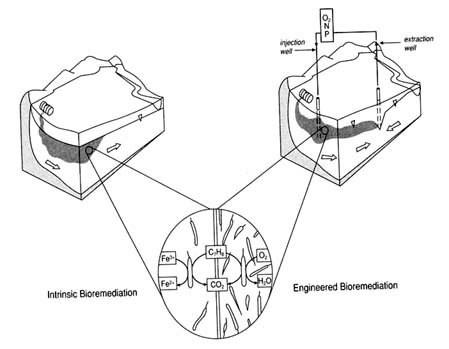Bioremediation for site cleanup (2)
Good morning all and welcome to my Blog
This is the concluding part of Bioremediation for site cleanup. You can view the first part here
In the first part we discussed the definition of Bioremediation, the factors to consider before suggesting Bioremediation for cleaning up a contaminated site, the advantages and disadvantages of Bioremediation.
You can recall that Bioremediation is just the use of living organisms (microbes, fungi) to degrade harmful chemicals/compounds
The concluding part will fully explain the bioremediation technologies we have.
The kind of Bioremediation technologies used for cleaning up a contaminated site is dependent on whether the contaminated material can be controlled and manipulated.
There are two types of Bioremediation technologies
- In situ Bioremediation
- Ex situ Bioremediation
In situ Bioremediation
In situ is a Latin word that mean in place Source
In situ bioremediation are the type of technologies that are used in place/on the site without removing the contaminated material which can be sand or water. The contaminated material is treated at the polluted site.
It is the most recommended type of technology if
- the contaminated material is large in terms of volume
- the polluted site is not easily accessible by vehicle
There are two types of In situ Bioremediation, we have intrinsic and extrinsic In situ bioremediation
Intrinsic In situ Bioremediation
It is often termed natural, passive bioremediation, because it is the type of In situ bioremediation that occurs naturally. The indigenous microorganisms found in the contaminated area carry out the bioremediation process without any human help or any addition.
Engineered In situ Bioremediation
In some cases where the indigenous microorganisms can’t independently degrade the contaminants, engineered systems are constructed to aid their degradability rate. The systems constructed supply nutrients, nitrate, oxygen, and sulfate to the microorganisms, which help them increase the rate of degradation.
Sites conditions that affects In situ Bioremediation
- pH
- Contaminants bioavailability
- Level of electron acceptors
- Water content
- Temperature
Ex situ Bioremediation
Ex situ means offsite. Ex situ bioremediation technologies are bioremediation technologies that involves removing the contaminated material, and treating it or manipulated offsite.
The contaminated material is usually removed by excavation and then treated by composting, landfarming, bioreactors, biopiles.
It has advantages such as minimization of risk, and rapid rate of degradation.
Additional ideas gotten from Link Link Link
Others are solely my write-up.
Kindly Follow, Upvote, Comment, and Resteem if you like this Post



Nice post, it is so cool post.
This is very informative. I hope Nigeria introduces bioremediation to help keep our environment clean
This post has received a 31.03 % upvote from @voterunner thanks to: @zoneboy.
You got a 76.47% upvote from @steembloggers courtesy of @zoneboy!
Nice post